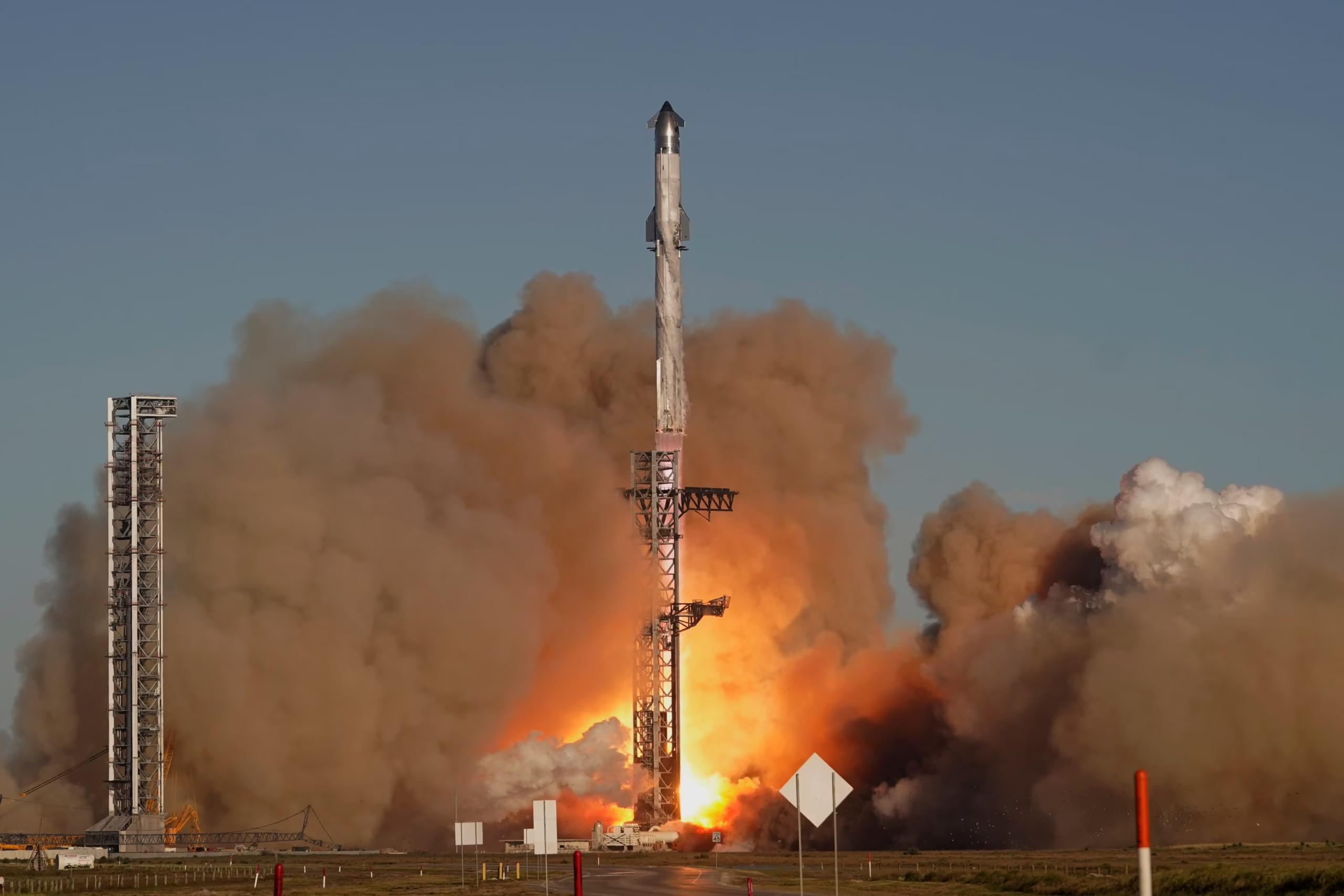On Thursday, SpaceX reported that their Starship spacecraft malfunctioned during a test flight intended to evaluate the megarocket’s performance.
Somewhere over the Gulf of Mexico or perhaps the Caribbean Sea, the upper stage of the rocket system seems to have broken apart. Videos of debris flowing across the sky surfaced on social media shortly after SpaceX reported losing contact with the spaceship.
After posting a video of the wreckage on X, Elon Musk, the founder and CEO of SpaceX, wrote: “Success is iffy, but entertainment is sure!”
“Preliminary indication is that we had an oxygen/fuel leak in the space above the ship engine firewall that was substantial enough to produce pressure in excess of the vent capacity,” Musk continued.
Musk went on to say that while the business would make some adjustments, such as increasing fire suppression, it would not alter its plans for future launches.
Starship, which is still undergoing testing for trips to the moon and beyond, had no passengers.
The rocket lifted off and its booster came back to land undamaged at SpaceX’s “Starbase” launch site in Brownsville, Texas, marking the beginning of the company’s seventh test flight of Starship.
Shortly after, about nine minutes after liftoff, SpaceX lost contact with Starship, which sparked issues. The business lost the ship, according to Kate Tice, senior manager of quality systems engineering at SpaceX, which posted on X that it had gone through a “rapid unplanned disassembly.”
It was announced on Thursday that the Federal Aviation Administration is “informed an anomaly occurred during the SpaceX Starship Flight 7 mission.”
The FAA “briefly paused and diverted aircraft over the area where space vehicle debris was falling,” the agency stated in a later statement, but that regular operations have since resumed.
A SpaceX video posted earlier Thursday showed that the planned trajectory for Starship was to go from the southern tip of Texas over the Gulf of Mexico and the Yucatán Peninsula, then east near Cuba and across the Atlantic Ocean. Had the flight gone as planned, it would ultimately have splashed down in the Indian Ocean.
Starship is the most powerful rocket ever developed, measuring 400 feet tall. The rocket has two parts: a first-stage booster known as Super Heavy and the upper-stage Starship spacecraft.
The system is expected to play a crucial part in NASA’s efforts to return to the moon. The agency selected SpaceX to carry astronauts to the lunar surface during NASA’s planned Artemis III mission, which is scheduled to launch in 2027. Musk has also said Starship could be used for future missions to Mars.
In his congrats post on X, NASA Administrator Bill Nelson emphasized the importance of test flights in guaranteeing the safety of crewed missions.
“Space travel is challenging. It is not at all routine. Each test advances us closer to the Moon and then Mars via #Artemis, which is why these tests are so crucial,” he wrote.
Accidents are not uncommon during the testing of new rockets and spacecraft. SpaceX’s first attempt to launch Starship in 2023 ended in a fiery explosion a few minutes after liftoff. The incident triggered a monthslong safety review and drew scrutiny of the environmental consequences of launching rockets from the Gulf Coast of southern Texas.
Holly Hackman told NBC News that she and her boyfriend were strolling down the beach in Turks and Caicos when they noticed the debris starting to flow overhead. They took a video, which she then uploaded on the internet.
Hackman claimed that he believed it to be aliens. “My partner freaked out when he looked up as we were taking a walk on the beach.”














